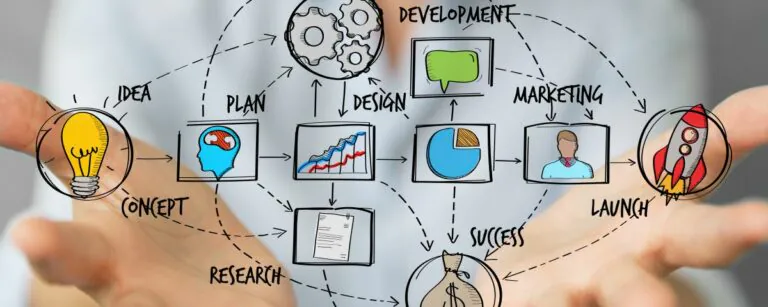Developing innovation processes and workflows: challenges and solutions
Acceptable processes evolve over time. In contrast, truly competitive processes rarely arise by chance. High complexity and numerous interrelationships often mean that optimization in one area leads to deterioration in two others. A trial-and-error solution is possible, but it is time-consuming, frustrating, and uncertain. For those looking to design new processes, innovation processes, and other business workflows in a targeted and efficient manner, focused process design is beneficial. This approach ensures that all steps are clearly defined, resources are used efficiently, and sources of error are minimized.
Common difficulties in developing innovation processes and workflows
Similar to the innovation development itself, the development of processes and workflows is rarely the real day-to-day business in most organizations. Accordingly, process developments are often slow and frustrating. Typically, the following hurdles exist for the effective development of innovation processes, workflows, and services:
Many stakeholders with conflicting expectations
Processes, services, and workflows affect many departments, stakeholders, and customer groups. These groups have different, often conflicting expectations. Moderating these expectations and finding a common denominator requires communication skills and business understanding to achieve a shared outcome.
Lack of experience in targeted process development
Many companies can develop products professionally. Comparable professionalism in process development is relatively rare. Without appropriate methodologies and experience, processes tend to be aimless and random. In many cases, this is absolutely sufficient. However, for core competencies of the company, such as innovation, the random process is usually not good enough. Competitiveness is lacking, development takes too long, and stopgap solutions block important resources and capacities that should be focused on more critical issues than smoothing out the rough edges of organically grown workflows.
Trial-and-error mentality in process and service development
Brainstorming and trial-and-error are good approaches in complex situations. However, the degree of complexity in organizations is often too great for a layperson to capture and develop in a structured manner. The principle of “trial and error” leads to workflows that are unnecessarily complicated and underdeveloped. This results in high ongoing costs, a lack of transparency, and poor controllability. Poorly functioning, grown processes often require lengthy process assessments to determine why processes are slow, where painful errors occur, and which root causes need to be addressed.
Successful approaches to developing innovation processes, business processes, and services
Developing business processes and services is less labor-intensive than often thought. The approaches are known, tested, and effective. Once the decision is made to deliberately develop a functioning process instead of tinkering with individual components, the following success principles can help achieve good results.
Participatory process development instead of PowerPoint answers
Commitment to the developed workflows, services, and processes arises from participation in the process. A core team of process owners, experts, and key stakeholders enables a joint, viable solution. If possible, the team should conduct a “test process” before the actual process development to gain firsthand experience. This prevents theoretical discussions and lengthy, unnecessary turf wars.
Capturing and consolidating stakeholder needs
The core team is a first step in capturing customer needs. Additionally, the needs and expectations of other relevant stakeholders, as well as internal and external customers, should be gathered. Short personal or phone interviews with stakeholders are well-suited for this purpose. Ideally, expectations complement each other. Conflicting expectations must be understood, clarified, and bundled into a common response or clear options.
Benchmarking and developing alternatives
Looking outward to other companies and industries works wonders. Many solutions are transferable. The wheel rarely needs to be completely reinvented. Often, there are already best-practice examples within the organization that can serve as orientation. Benchmarks from comparable situations additionally fuel ambition. Furthermore, various process alternatives should be developed and weighed against each other to select the best solution.
Simulation and testing before costly rollout
During the process development “on paper,” the endeavor is still relatively cost-effective. Once the service or process is launched live, it involves real costs, real resources, and far greater financial dimensions. Before implementing the process, testing it rigorously in the form of service prototyping or process simulation is worthwhile. This allows potential weaknesses to be identified and addressed early, before costly mistakes occur in operational operations.
Complete process design or compact coaching in less complex cases
Processes and services for complex process landscapes are more time-consuming to develop. Depending on complexity, a complete process design toolkit is advisable. In simpler environments, process and service development can take place within the framework of compact individual or team coaching.







